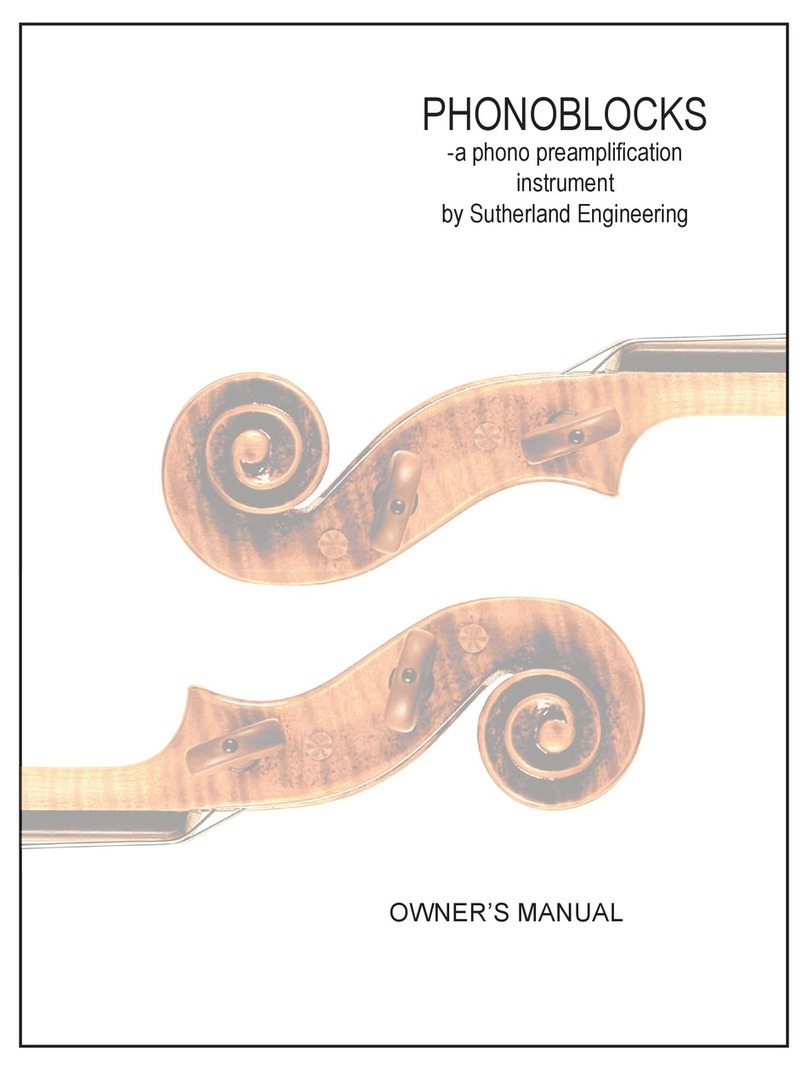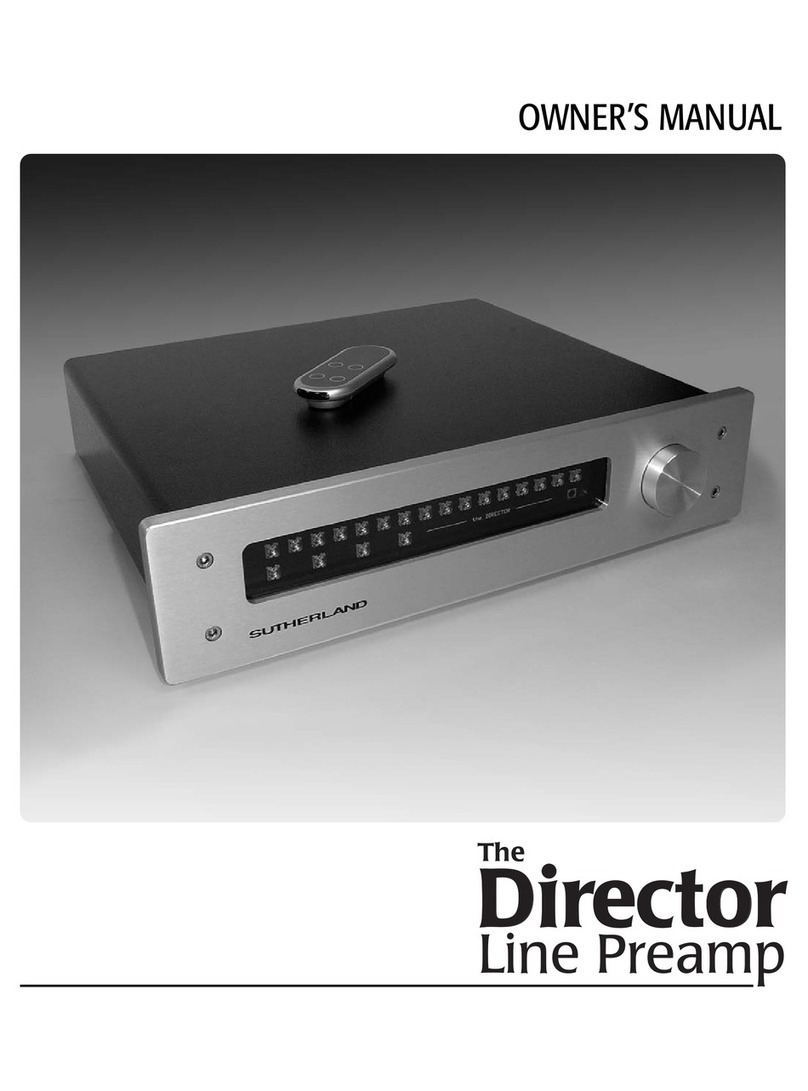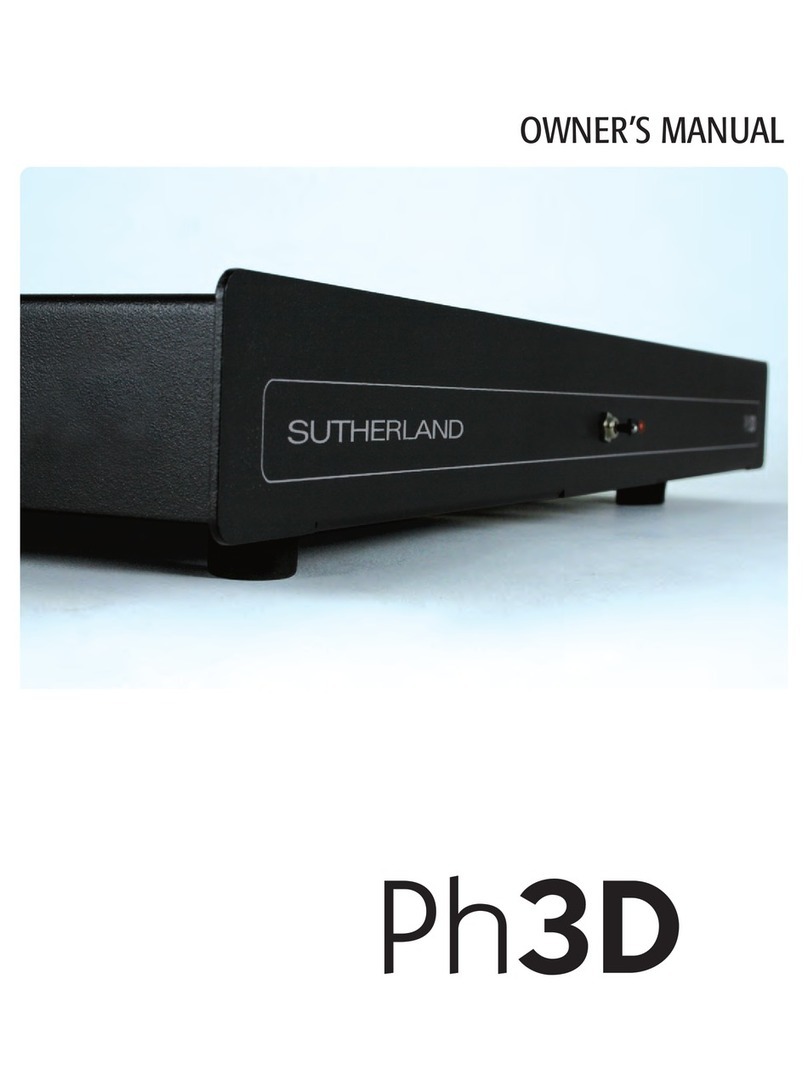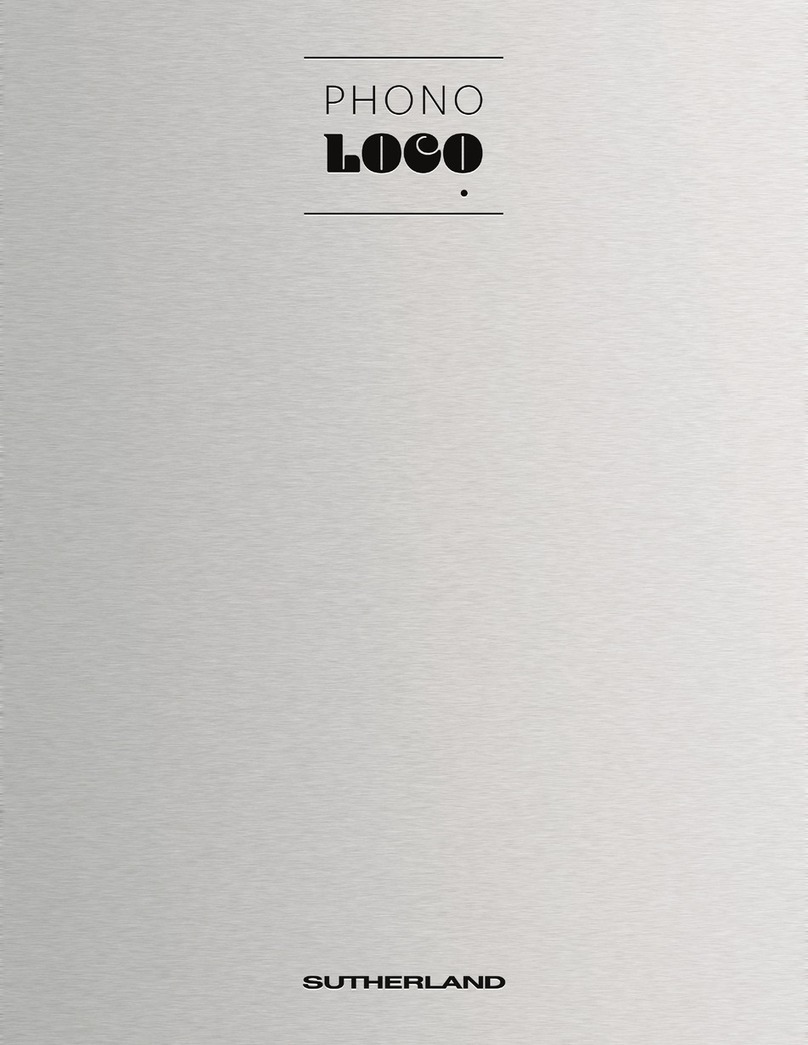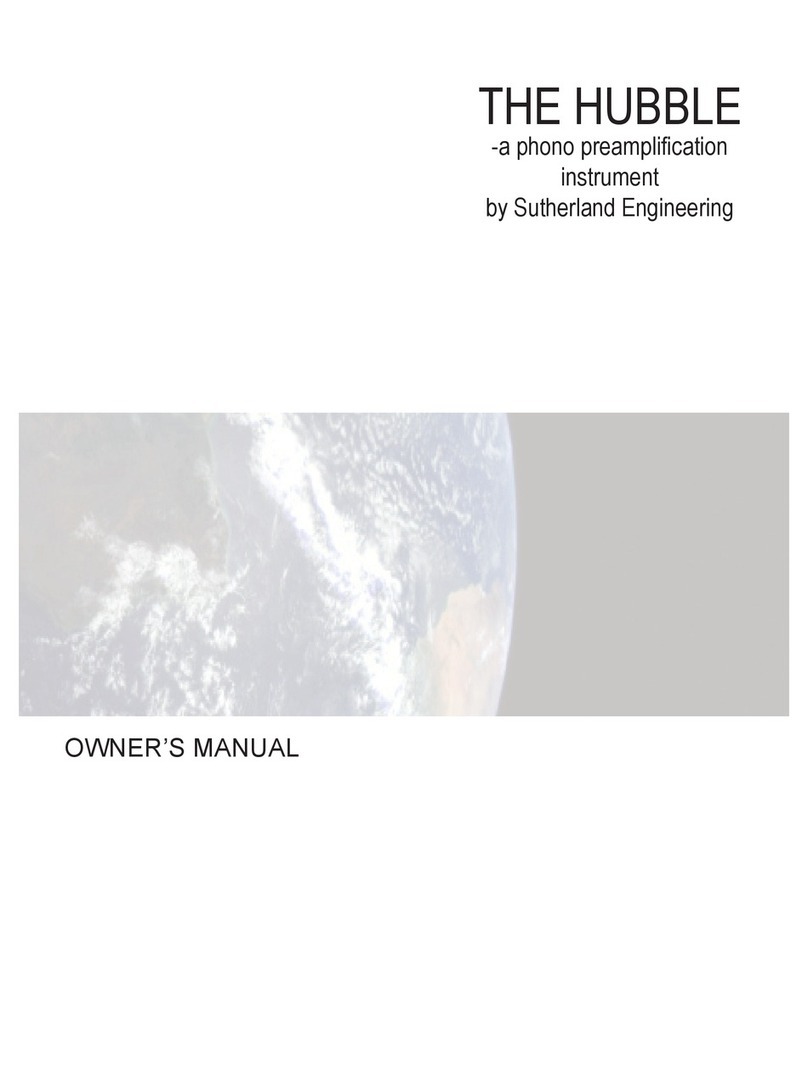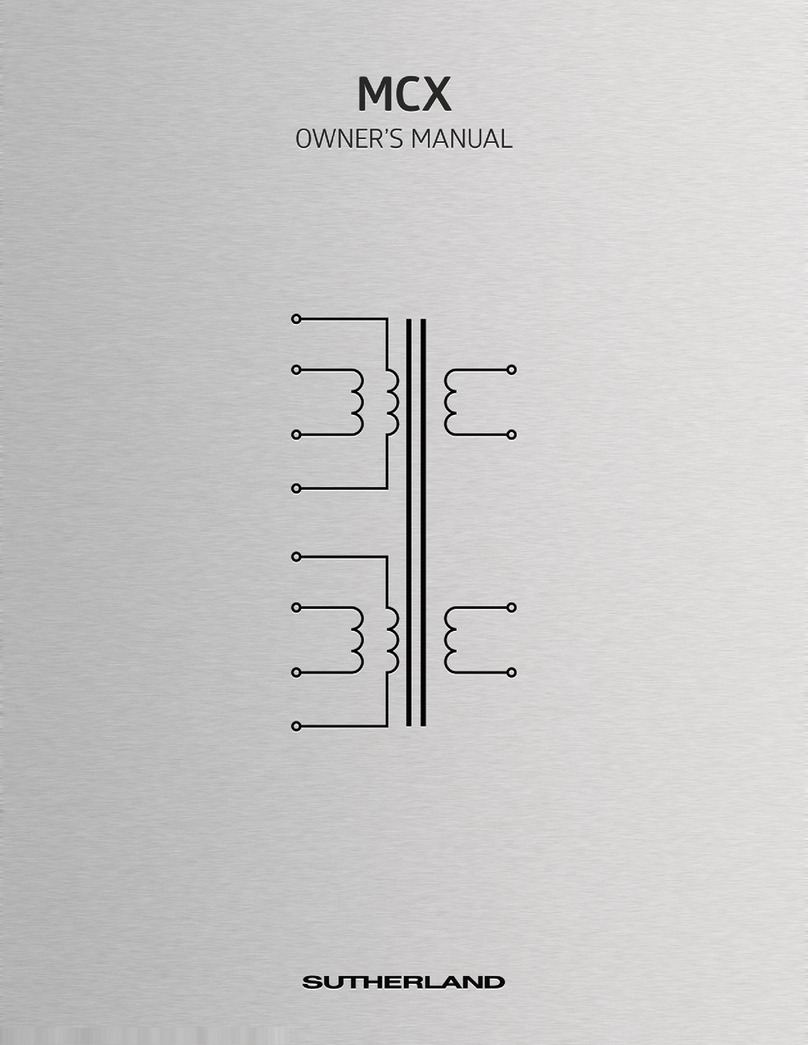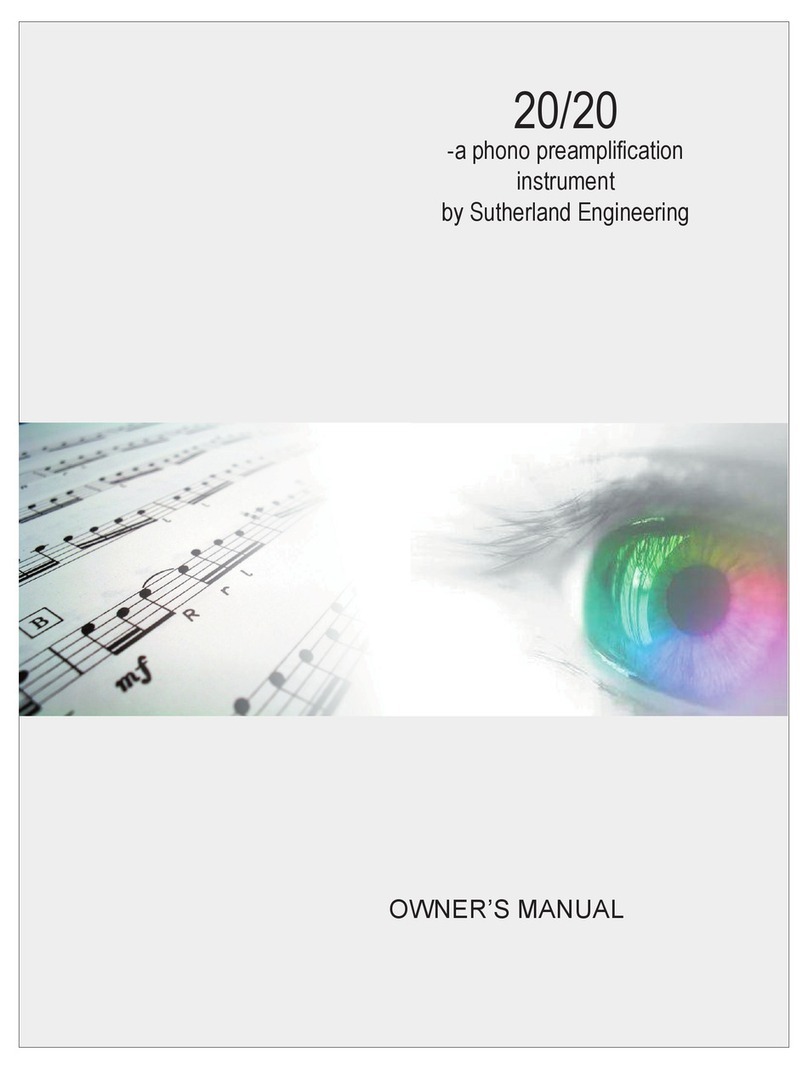
6
The best environment for delicate analog
audio signals is LESS environment.
A compacted area for the circuit with minimal
distance between components is a big
advantage. The musical signal will have the
tightest, shortest and purest connection from
one component to the next.
Another performance necessity is a low
impedance, low noise power source for the
amplifiers. That would be a bank of multiple
film and electrolytic capacitors.
Ideally, they would be paralleled with very
wide copper traces and a very short distance
from the amplifiers.
The PhonoBlock refinements are derived from the Argentum design.
The much more expensive Argentum is an all–out, hand-wired, silver–
signal path version of the classic PhonoBlock. Turns out, the same
extremely disciplined short signal path layout could be used to refine
the classic PhonoBlock audio board.
